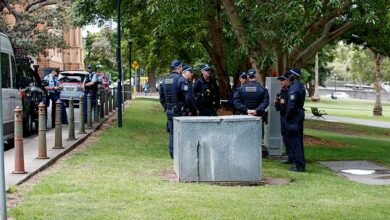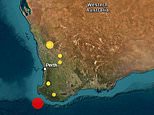Reason Apollo 8 astronaut, 90, died in horrific plane crash on lake during solo flight revealed

Retired American astronaut William Anders, who flew on the Apollo 8 mission in 1968, was flying past a friend’s house when the craft crashed into a lake, killing him.
The 90-year-old died after the small plane he was piloting crashed near Orcas Island in early June. When the plane hit the water, it created a fireball that was captured on video.
Anders, whose 1968 “Earthrise” photo showed the planet from space as a shadowy blue marble, had texted a friend saying he planned to fly past her home on the west coast of Orcas Island, the National Transportation Safety Board said in its preliminary report.
According to the NTSB, Anders’ flybys were not unusual, according to the friend.
She said he typically made two passes over the plane and sometimes wiggled the plane’s wings, but “he never performed any kind of aerobatic maneuvers.”

Retired American astronaut William Anders, who was part of the Apollo 8 mission in 1968, was flying past a friend’s house when the craft crashed into a lake, killing him.

The 90-year-old died after the small plane he was piloting crashed near Orcas Island in early June, resulting in a fireball when the plane hit the water, which was captured on video
At approximately 11:37 a.m. on June 7, the friend began hearing the “familiar” sound of his plane, the NTSB said.
Shortly afterwards she saw the older model Beech A45 flying over her head, heading north along the coast in front of her house.
She lost sight of the plane for a moment as it flew behind trees. When she saw it come back into view, it was flying south and over the water.
After it was over, she saw the left wing drop and thought it was part of his routine. But the wing continued to drop as the plane plummeted toward the water below.
At the same time, another witness on the same shoreline, north of Anders’ friend’s house, filmed the passing old plane with his phone, the NTSB said.
The video shows the plane diving almost vertically towards the water, before its right wingtip hits the water.
The friend and the person who took the video were the only two witnesses who came forward, the NTSB said.
The plane sank near the north end of Jones Island, which is off the west coast of Orcas Island, San Juan County Sheriff Eric Peter said.

Anders, whose 1968 “Earthrise” photo showed the planet from space as a shadowy blue marble, had texted a friend to say he planned to make a flyby near her home on the western shore of Orcas Island, the National Transportation Safety Board said in its preliminary report

This image from an NTSB investigation shows where both a witness with a camera and Anders’ friend saw him crash
That afternoon, the body of 90-year-old Anders was found.
Most of the wreckage was recovered in the week after the crash and is being stored for further examination, the agency said.
Anders’ Earthrise photograph, the first color photograph of Earth from space, is one of the most important photographs in modern history because of the way it changed humanity’s view of the planet.
The photo is seen as the catalyst for the global environmental movement, as it shows how vulnerable and isolated the Earth looks from space.
Anders, a retired major general, said the photo was his most significant contribution to the space program, along with his work on the operation of Apollo 8’s command module and service module.
The photo, the first color photograph of Earth from space, is one of the most important photographs in modern history because of the way it changed humanity’s view of the planet.
The photo is seen as the catalyst for the global environmental movement, as it shows how vulnerable and isolated the Earth looks from space.
The astronauts were tasked with taking photographs of possible landing sites on the moon while 113 kilometers above the moon.

Anders, a retired major general, has said the photo was his most important contribution to the space program, besides ensuring the Apollo 8 command module and service module functioned properly.

Anders took a famous photo of the Earth and part of the Moon’s surface during the Apollo 8 mission, called Earthrise
“We came to explore the moon and what we discovered was the Earth,” Anders likes to say.
In July 1969, Apollo 8 was overshadowed by the Apollo 11 moon landing with Neil Armstrong and Buzz Aldrin.
Borman and Anders never made another space trip and the Russian cosmonauts never reached the moon.
Anders said in a 1997 oral interview with NASA that he did not think the Apollo 8 mission would be without risks, but that there were important national, patriotic and exploration reasons to proceed.
He estimated that the chances of the crew not returning were about one in three. The chances of the mission succeeding were the same as the chances of the mission not starting at all.
He suspected that Christopher Columbus left with less promising prospects, reporting that the Earth looked fragile and seemingly insignificant, but was nevertheless home.
Anders said, “We had been going backwards and upside down, and we didn’t really see the Earth or the Sun. When we turned around and came back, we saw the first Earthrise.
“That was absolutely, by far, the most impressive thing. It was a real contrast to see this very delicate, colorful orb that looked to me like a Christmas tree ornament rising up over this very barren, ugly moonscape.”
His son, retired Air Force Lt. Col. Greg Anders, told The Associated Press after his father’s death that the family was devastated.
“He was a great pilot and we will miss him terribly,” he said.




